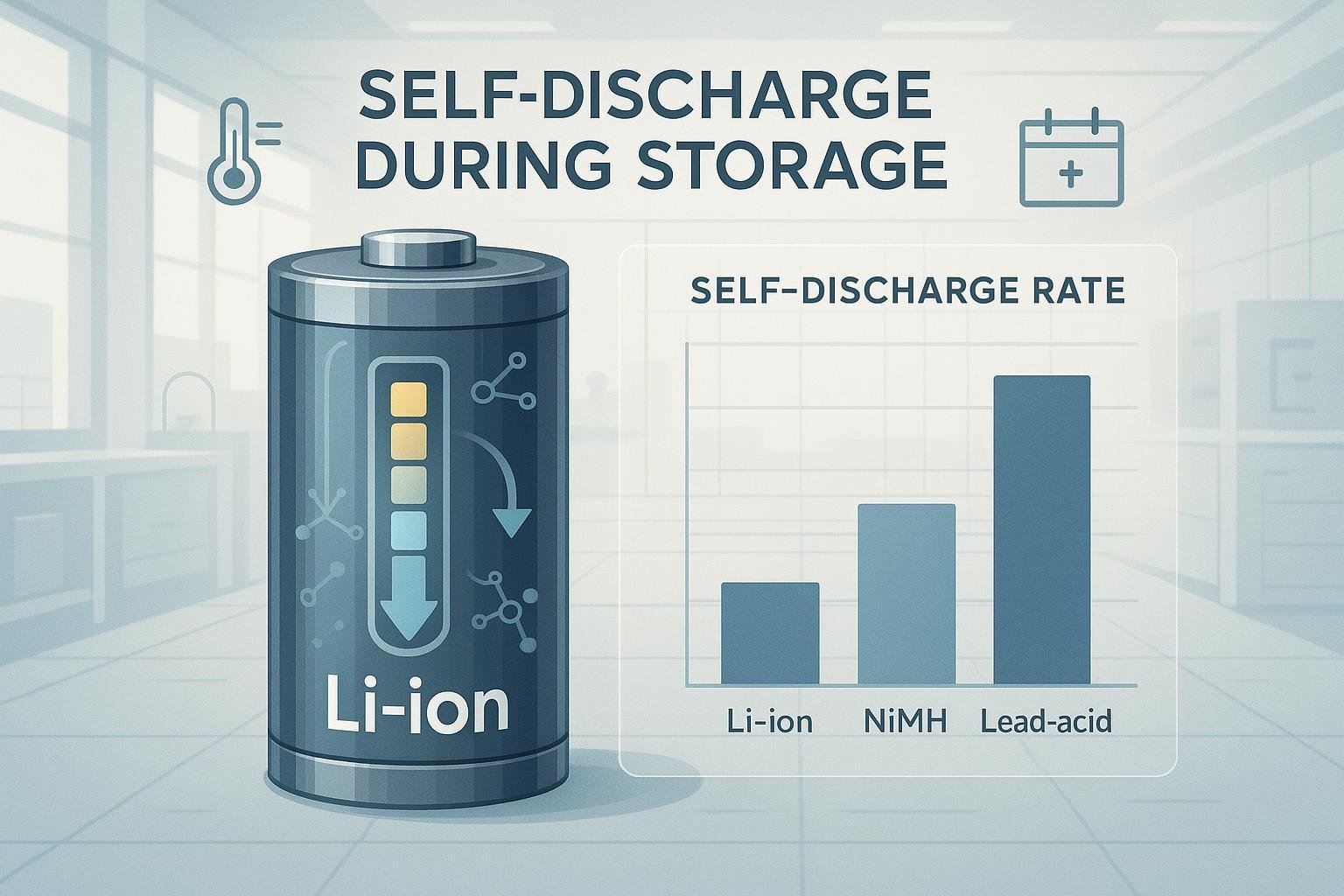
Definition in einem Satz
Self-discharge is the natural loss of stored charge in a battery over time—when it is not connected to a device—caused by internal chemical or physical processes.
Detailed Explanation: Mechanisms in Lithium Batteries
Every rechargeable battery gradually loses its stored energy even while not in use, but lithium-ion (Li-ion) and lithium-polymer batteries have significantly lower self-discharge rates than other chemistries. In these lithium-based batteries, self-discharge results primarily from:
- Irreversible chemical reactions: Residual activity between electrodes and the electrolyte continues even at rest.
- SEI (Solid Electrolyte Interphase) layer defects or aging: If this critical film covering the anode is imperfect or degrades, unwanted reactions persist, consuming stored energy.
- Electrochemical impurities: Tiny amounts of metal (like iron) or assembly materials can accelerate self-discharge by causing micro-shorts or shuttle reactions.
- Temperature and cell aging: Higher temperature and prolonged storage amplify these reactions, increasing energy loss (Quelle).
Typical lithium battery self-discharge rate: About 1–3% per month at room temperature, much less than NiMH (up to 30%) or lead-acid (4–6%) batteries.
Key Influencing Factors
- State of Charge (SOC): Full charge accelerates self-discharge; moderate SOC is best for storage.
- Cell purity and assembly quality: High-purity materials and precise manufacturing reduce internal loss.
- Environmental conditions: Elevated temperatures or humidity worsen internal reactions.
- Battery age or manufacturing defects: Both can escalate self-discharge unpredictably.
Practical Applications & Impact
Why is self-discharge important?
- Shelf life and readiness: Batteries stored as backup or for shipping (e.g., in industrial UPS, medical devices, solar power packs, or consumer electronics) must retain most of their charge without frequent recharging.
- Predictable reliability: Excessive self-discharge leads to shorter usable life and unpredictable device failure.
- Best practices: Store lithium batteries in cool, dry areas at 30–50% charge, use high-quality batteries, and rely on battery management systems (BMS) to monitor and balance cells (detailed guide).
Comparative Chart: Self-Discharge Rates by Battery Type
| Batteriechemie | Typical Self-Discharge Rate (per month, 20–25°C) |
|---|---|
| Lithium-ion/Li-poly | 1–3% |
| NiMH | 10–30% |
| Lead-acid | 4–6% |
| Alkaline (Primary) | <0.3% |
Li-ion’s lower rate is a key factor in its adoption for high-reliability electronics and industrial storage applications.
Related Terms & Concepts
- Capacity Retention: The ability of a battery to preserve its original charge and performance over time, directly impacted by self-discharge.
- BMS (Battery Management System): Electronics that monitor cell health, SOC, and can help detect abnormal self-discharge to prevent premature battery wear.
- Calendar Aging: The gradual decline in battery performance due to chemical changes over time, whether or not cycles are performed. Different from self-discharge, though both reduce available energy over time.
- Internal Resistance: An increase can signal aging or defects that also contribute to higher self-discharge.
For more on lithium battery performance and best practices, see Battery University: Self-Discharge.

